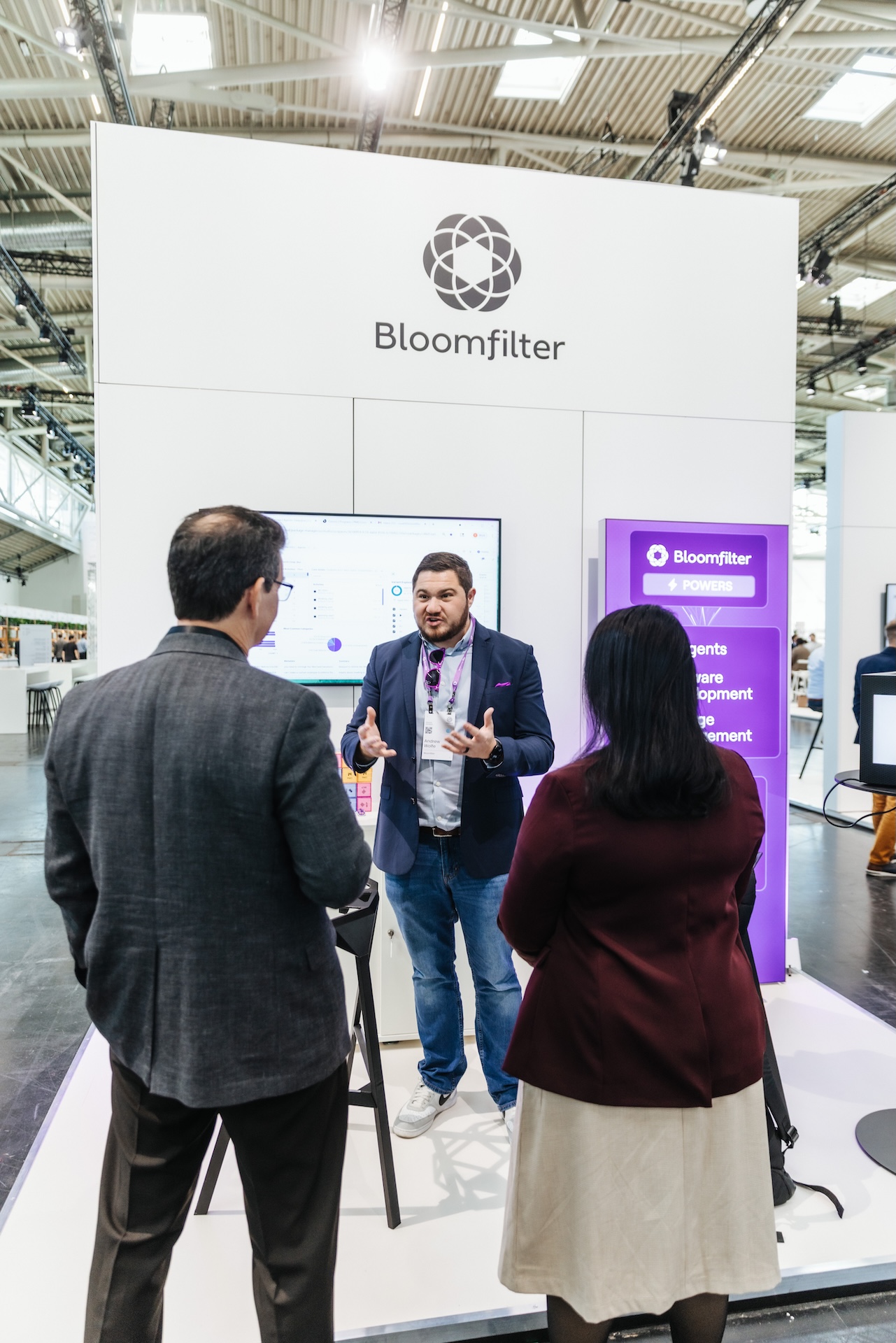
Last week in Munich, Celosphere brought together thousands of process thinkers, builders, and operators to answer a practical question: how do we make Enterprise AI truly work inside real businesses?
For Bloomfilter, the answer aligned with everything we have been building. Process intelligence is the connective tissue that lets AI understand how work actually flows, measure impact, and operate safely alongside people and systems.
AI adoption is accelerating with pragmatism. Attendees shared real wins and real constraints. The pattern was consistent: target the right use cases, bring business context to the model, keep humans in the loop where it matters, and measure value.
Governance and observability are non-negotiable. Leaders want AI that is explainable, auditable, and aligned to policy. Process intelligence provides the shared understanding of work that makes this possible.
Open ecosystems will win. Customers, partners, and vendors are aligning around a composable approach. No single tool can do it all. Interoperability and shared context are the unlocks.
Alexander Rinke captured it well: making Enterprise AI work is a community effort grounded in how your business actually runs.
On November 4, we introduced the Celonis Agent Miner by Bloomfilter. It makes AI observable, measurable, and governable through process intelligence.
With Agent Miner, enterprises can:
The live demo visualized human-agent collaboration and revealed exactly where agents accelerated delivery and where they caused rework. It turned curiosity into clarity.
Our Co-CEO Erik Severinghaus led two lightning talks with a simple point:
AI does not need more power. It needs process.
He showed how process intelligence trains and governs agents by embedding business context into how they reason and act. When performance, governance, and ROI are connected, AI shifts from experiment to infrastructure.
Bloomfilter was named the Global Winner of the 4th Celonis Ecosystem Hackathon, powered by AWS.
Our Universal Agent Optimizer captures real-time telemetry, converts it into process intelligence, and creates feedback loops that help agents learn, adapt, and deliver measurable value.
The takeaway: observability plus process context is the fastest path to better agents.
To support the launch, we released Process Intelligence for AI Agents.
The core argument is direct: the organizations that mine, structure, and operationalize their proprietary process data will train and govern agents more effectively than those that only scale models or compute.
Process intelligence is now a core part of how enterprises operate. What’s changing is where it’s being applied.
As AI becomes embedded across departments, software delivery itself has become an enterprise-wide process—not just an IT function. Every team now depends on internal systems and AI-driven applications to execute work, making visibility, governance, and performance within the SDLC a shared business concern.
At Celosphere, this convergence was evident. Process intelligence is expanding from traditional operational use cases to the systems that build and power modern enterprises—creating a unified view of how people, software, and AI agents work together.
We are building toward a world where:
The foundation is here. The opportunity is large. We are excited to keep building with the community that is making Enterprise AI real.

